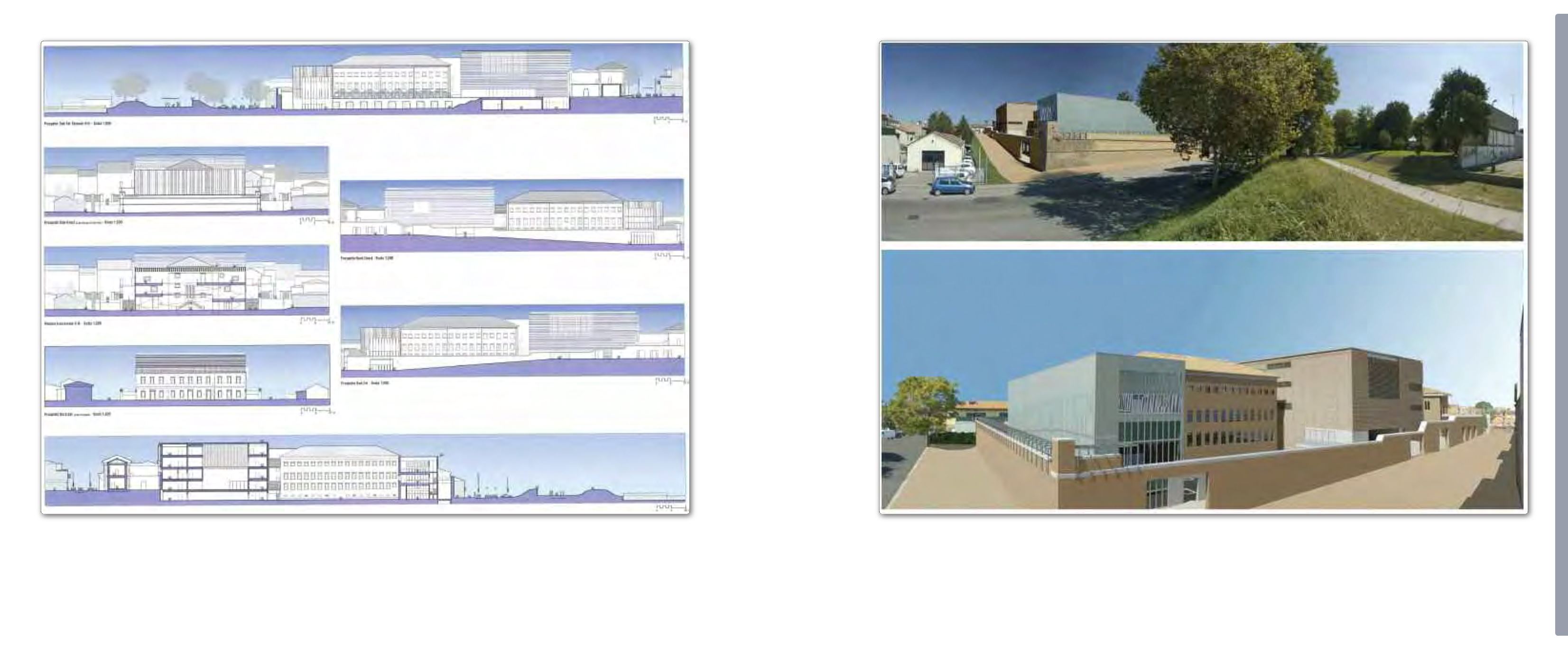
Il museo è il potenziale luogo dell’incon-
tro tra diverse culture e storie. Il carcere
dismesso non chiude ma apre a diverse
realtà e percezioni. Il progetto si basa sui
seguenti punti:
• il percorso di avvicinamento al Museo
non è frontale ma laterale, costeg-
giando dall’interno il sistema delle mura;
• il mantenimento del doppio recinto è la
tangibile memoria dell’istituzione carcere;
• la distribuzione su diversi livelli dell’area
di intervento rimane leggibile nel nuovo
complesso architettonico;
• la diversità tra i corpi che compongono
il complesso museale è il segno tangibile
di differenti condizioni presenti nell’area e
conseguentemente nell’edificio.
Da una parte su via Rampari di San Paolo
il corpo di ingresso si pone come una
grande teca traslucida e trasparente, at-
traverso la quale si intravedono, o si indo-
vinano, le sagome degli spazi che salgono
ai diversi livelli dell’edificio, mentre su via
Piangipane il nuovo edificio del museo si
configura come una sorta di
black box
ri-
vestito in doghe laterizie, tra corpi edilizi
con i quali intende dialogare per tessiture
più che per forme.
The museum is a potential meeting place
between people with different cultures
and histories. The ex-jail doesn’t shut off
but opens up differing realities and
perceptions. The project is based on the
following:
• the path leading to the Museum comes
from the side, not the front, following the
network of the walls;
• keeping the double boundary as a tan-
gible reminder of the jail;
• distributing the changes over different
levels while keeping to the design of the
new structure;
• the different blocks that make up the
museum complex are a tangible sign of the
different conditions inherent in the area
and consequently in the buildings.
From the side facing via Rampari di San
Paolo, the entrance block appears as a
large transparent and translucent cabinet,
through which can be seen, or intuited, the
outlines of the buildings within that rise to
differing heights. From via Piangipane,
however, the new museum block appears
as a kind of
black box
covered in brick staves
set between the other buildings with which
it relates through texture rather than form.


